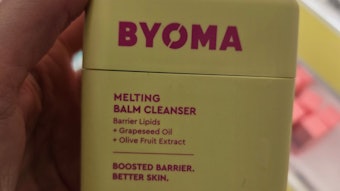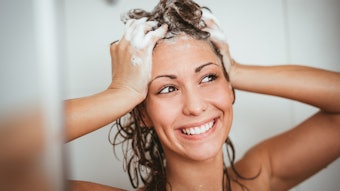Shampoo and body wash/shower gel are two major classes of personal care cleansing products. Shampoos are specifically formulated to clean and take care of hair, whereas body wash is a liquid soap that is appropriate for cleansing the body. Most commercial shampoos and body washes are made as creams or gels. They are emulsions or gels of water and detergent base with added functional ingredients. Because the form or texture of both shampoos and body washes are creams or gels, many people may mistakenly use one as the other. Although there are some similar components inside both formulations, there are many differences from the view of a personal care formulator.
The first difference is their target. Hair is actually a modified type of skin. The main difference between hair and skin is that skin is basically a living organ that replaces its outermost layer on a frequent basis. In contrast, hair is basically dead material derived from a few live cells deep within the skin surface.
Shampoo Formulation
Hair care is much more complicated than body care and will differ according to one's hair type and according to the processes applied to hair. Hair is a manifestation of human diversity. For example, there are three basic ethnic hair groups: Caucasian, Asian and Black-Afro/Caribbean. Hair types vary from completely straight to tight wiry curls, and from fine and flyaway to coarse and frizzy, with widely differing behavior patterns.
Shampoos were created because hair became rough and damaged when cleansed with soap. Hair cannot be cleansed well with body wash instead of shampoo. The problem with using shampoo on the body is that some shampoo ingredients are not needed for skin and it can impart a slimy feel.
Shampoo should have the following properties: proper detergency without degreasing, ability to form delicate and rich bubbling, easy rinsing, good finish after washing hair, minimal skin/eye irritation, no damage to hair, low toxicity and good biodegradability.
Shampoo and body wash are formulated differently. Shampoos are made for specific hair conditions such as dryness, oiliness, damage from color treatment, frizziness, etc. Each function uses different ingredients designed for hair and not skin. The purpose of a shampoo is to clean the hair, but it must not overly clean the hair or all of the protective oils in the hair would be stripped. Shampoos must also smell decent, look good, feel thick or creamy on the hand and produce a rich lather. Other selling points might be trendy herbal extracts or nutritional additives like amino acids from silk or milk, vitamins, etc.1
Shampoos have a pH of between 4 and 6. Acidic shampoos are the most common type of shampoos; they do not contain soap and their pH is closer to the natural pH of hair. Due to their pH, acidic shampoos do not swell the hair shaft or strip the natural oils. The scales on a hair follicle lay flat at a slightly acidic pH, making the hair feel smooth and look shiny. Citric acid is often used to adjust the pH down to 5.5. It is a fairly weak acid, which makes the adjustment easier. It also has a small amount of preservative action.
Even though most modern shampoos include a conditioning component, shampooing is frequently followed by the use of conditioners which ease combing and styling.1 Conditioners are often used after shampooing to smooth down the cuticle layer of the hair, which can become roughened during the physical process of shampooing. Consumers expressed a need for cleaning and conditioning in one step; therefore, 2-in-1 shampoos were created with conditioning materials to offset the harsh effect of the surfactants on the hair. Conditioning the hair can mitigate hair damage by improving sheen, decreasing brittleness, decreasing porosity and increasing strength.2
There are some specialized shampoos such as anti-dandruff, natural, baby and animal shampoo. Anti-dandruff shampoo contains fungicides such as ketoconazole, zinc pyrithione and selenium sulfide, which reduce loose dander by killing malassezia furfur.1
Body Wash
Body wash is an emulsion/gel of water and detergent base with added functional ingredients such as moisturizer/conditioner, pearlescent pigments, colorants, fragrance, etc. It is used as a skin cleansing agent in the shower or bath. Body wash contains milder surfactant bases than shampoos. In addition to being pH-friendly to the skin (5–6.5), most also contain gentle conditioning agents in the formula. Body wash needs proper detergency without degreasing skin. It normally has a rich foam, easy rinsing, minimal skin irritation and good biodegradability. Almost all commercial body washes have pleasing scents.










